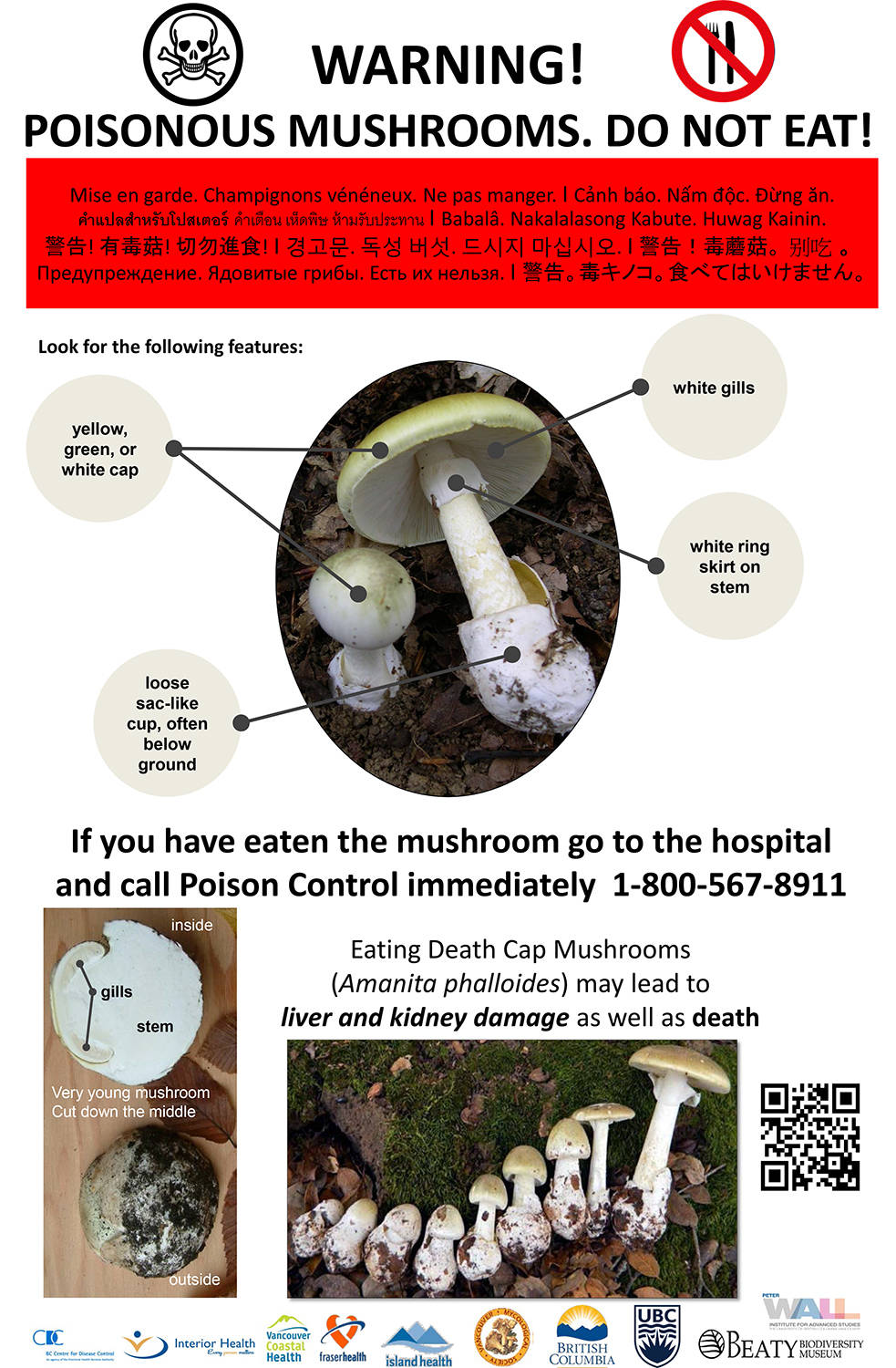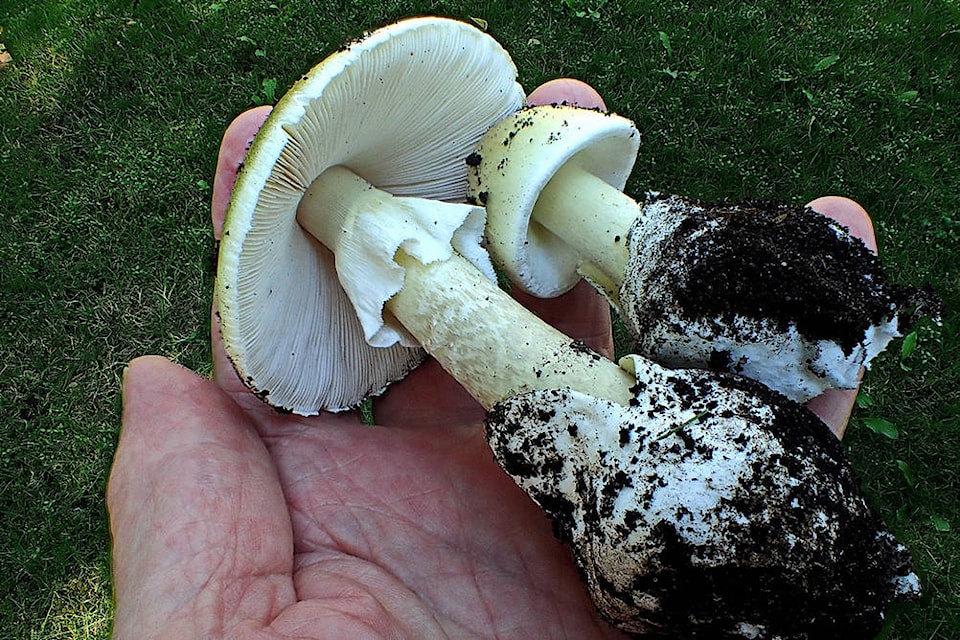It has been a prolific year for death cap mushrooms in Greater Victoria, with Uplands proving to be the preferred neighbourhood for the deadly fungi.
“This year has been a bumper year for them. We saw them showing quite early in the year, around mid-July, in patches in Uplands. They’ve been fruiting continuously since in fairly large numbers,” said Jason Gowen of the South Island Mycological Society, who has been monitoring the mushroom numbers in Uplands.
As awarenesss of death cap mushrooms grows, there is an increase in the numbers being observed and reported. Chris Hyde-Lay, Manager of Parks Services for Oak Bay, said Parks staff saw higher numbers of the mushrooms last year.
Though the death caps are fruiting in Uplands in the highest density, most commonly along Uplands Road into Upper Terrace, Gowen said they have also been found in the Cedar Hill area, Fairfield, and along Shelbourne St. into Gordon Head.
Scientifically known as Amanita phalloides, death cap mushrooms are part of a fungus family thought to be responsible for about 95 per cent of mushroom deaths. The B.C. Centre for Disease Control issued a warning about their proliferation after recent wet conditions triggered more calls to the Centre.
“We’ve had 30 calls between June and August about mushroom exposures and 16 in September alone,” said Raymond Li, pharmacist with the B.C. Drug and Poison Control Centre.
RELATED: Disease control warns mushroom pickers against death cap
Most of the calls to poison control come from people who are worried about children or pets who may have taken a bite out of a mushroom they found, according to Li. He suggests taking the whole mushroom or careful pictures, in order for it to be properly identified.
In 2016, a three-year-old child died after eating soup for dinner that contained a death cap mushroom. According to B.C. Centre for Disease Control, the mushroom was picked by a family member on a city street in Victoria, not recognizing it as a poisonous variety.
Mycologists Adolf and Oluna Ceska, who also note that this year is particularly flush with death caps, warn that international students may be at higher risk as well.
“In some countries, all white mushrooms may be considered edible. The death cap mushrooms could resemble an edible mushroom from a student’s home country,” said the Ceskas, hoping to bring more awareness to campuses about the deadly mushrooms.
Death cap mushrooms can look similar to Asian paddy straw mushrooms.
RELATED: Victoria boy dies after ingesting poisonous mushroom
Death cap mushrooms are not native to B.C. They are believed to have been introduced into the environment in the roots of imported hardwood trees. It explains why they are city-dwellers, usually found at the base of introduced boulevard trees with irrigation. Uplands is a prime environment. Aside from the trees there being the ideal hosts for death caps, the ample watering that happens in Uplands in early summer provides an ideal fruiting scenario for them as it triggers earlier growth.
Due to the fungus having a symbiotic relationship with the tree host, getting rid of them is a challenge. Removing the mushroom is just removing the reproductive piece, the fungus is still in the roots of the tree.
“Arming ourselves with knowledge is best. This is a case of education versus eradication. It is good for the public to be aware of the danger and then learn how to identify them,” said Gowen, “because they aren’t going anywhere.”
Death cap mushrooms have a whitish stalk that is about 6 inches long, with a white ring skirt on the stem just below the cap and a white cup-like structure at the base of the mushroom. The cap can be olive green, pale green, yellow, or white, and can have a sheen to it. The gills underneath the cap are white, plentiful and crowded.
What to do if you find death cap mushrooms growing:
- Note the location, take careful photographs, and make a report
- Remove the mushrooms and dispose of them
- Touching death caps is not a risk but gloves are recommended
- Do not dispose of death cap mushrooms in your home compost
- Dispose of them in the municipal compost (green bins) or bag them and put them in the garbage
- Wash your hands after removing the mushrooms
If you see a death cap mushroom, you can also report it through the invasive species working group at https://www.for.gov.bc.ca/hra/invasive-species/reportInvasives.htm
If you suspect mushroom poisoning, call poison control immediately at 1-800-567-8911.
keri.coles@oakbaynews.com
Follow us on Instagram Like us on Facebook and follow us on Twitter.

